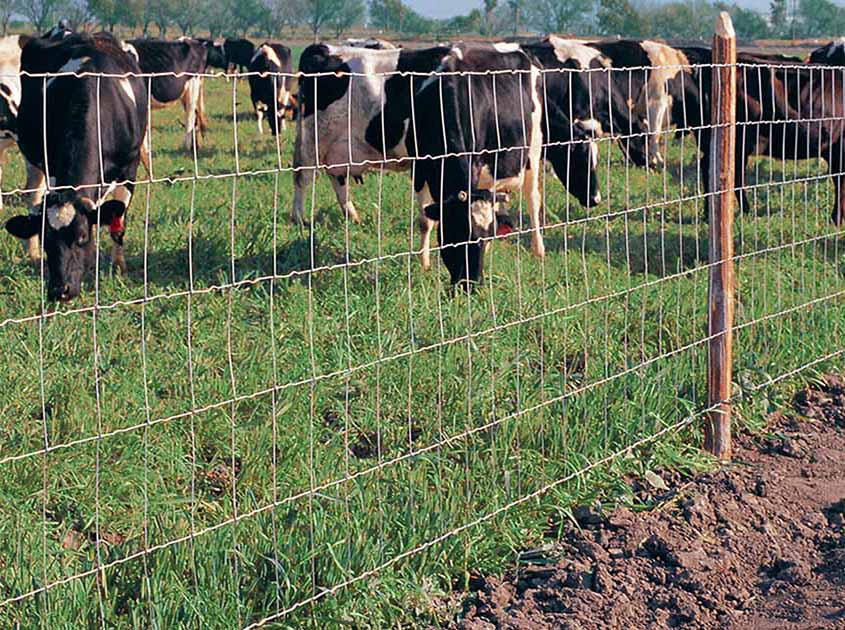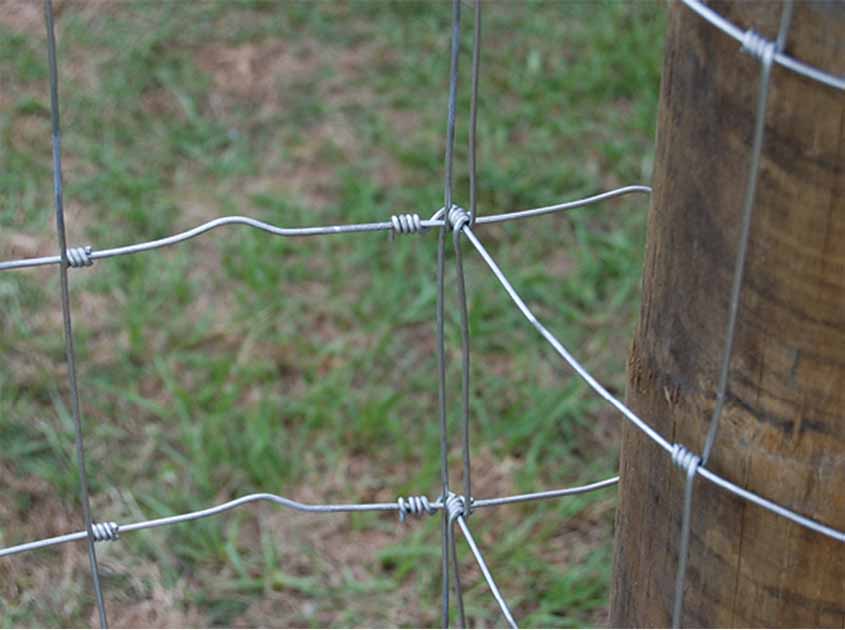- Home
- About Us
- Products
- Service
- Project
- News
- Contact Us
Pulished on Jun. 09, 2023
When it comes to selecting and installing HINGE KNOT FIELD FENCE, there are key points and best practices that can greatly contribute to the success of the project. In this article, we will share our experiences and provide insights into the important considerations for choosing the right fence and ensuring a proper installation. By following these guidelines, you can maximize the effectiveness and longevity of your HINGE KNOT FIELD FENCE.
Assessing Site Requirements:
Before selecting a HINGE KNOT FIELD FENCE, it is crucial to assess the specific requirements of your site. Consider factors such as terrain, soil conditions, climate, and the intended purpose of the fence. This assessment will help you determine the appropriate height, mesh size, and wire gauge needed for optimal performance.

Quality Materials and Construction:
Choose a HINGE KNOT FIELD FENCE that is made from high-quality materials, such as galvanized steel or coated wire, to ensure durability and resistance to rust and corrosion. Additionally, pay attention to the construction of the fence, ensuring that the hinge knots are secure and properly formed, and the wires are tightly woven together. This will enhance the fence's strength and longevity.
Mesh Size and Wire Gauge:
The mesh size and wire gauge of the fence are critical factors in determining its effectiveness. For containing livestock, choose a smaller mesh size to prevent animals from getting their heads stuck in the fence. The appropriate wire gauge will depend on the size and strength of the animals you are containing. Consult with a fencing professional or supplier to determine the best options for your specific needs.

Proper Installation Techniques:
Proper installation is essential for the functionality and longevity of the HINGE KNOT FIELD FENCE. Begin by carefully marking the fence line and clearing any obstacles or vegetation along the way. Ensure that the fence is correctly tensioned to prevent sagging or leaning. Use sturdy posts that are properly spaced and set at the correct depth to provide adequate stability. Properly bracing corners and gates is also crucial to maintain the integrity of the fence.
Regular Maintenance and Inspections:
To maximize the lifespan of your HINGE KNOT FIELD FENCE, implement a regular maintenance and inspection routine. Regularly inspect the fence for any signs of damage, such as broken wires or loose knots, and promptly repair them. Keep the fence line clear of vegetation to prevent it from exerting pressure on the fence. Additionally, consider periodic treatments, such as applying anti-rust coatings, to prolong the fence's life.

Conclusion:
Selecting and installing HINGE KNOT FIELD FENCE requires careful consideration of site requirements, quality materials, proper installation techniques, regular maintenance, and seeking professional advice when needed. By following these key points and best practices, you can ensure that your fence performs effectively and remains durable for years to come. Investing time and effort in the selection and installation process will ultimately contribute to the success of your fencing project.
What Are the Common Applications of Wire Mesh Fence in Construction?
Pulished on Dec. 15, 2025
Reasons Behind the Growing Demand for Security Fencing in the Middle East
Pulished on Nov. 28, 2025
Characteristics of Fence Demand in South American Construction Projects
Pulished on Nov. 28, 2025
How Middle East Distributors Can Quickly Evaluate the Quality of Wire Mesh Suppliers
Pulished on Nov. 24, 2025
What Type of Metal Fencing Is Best for Construction in the Middle East?
Pulished on Nov. 18, 2025
358 High-Security Fencing – Maximum Protection for Sensitive Sites
Pulished on Oct. 27, 2025
Welded Wire Mesh Fencing – Durable and Efficient Solutions for Global B2B Buyers
Pulished on Oct. 27, 2025
Cattle Fencing – Strong, Reliable, and Cost-Effective Solutions for Livestock Management
Pulished on Oct. 22, 2025
What Are the Common Applications of Wire Mesh Fence in Construction?
Pulished on Dec. 15, 2025
Reasons Behind the Growing Demand for Security Fencing in the Middle East
Pulished on Nov. 28, 2025
Characteristics of Fence Demand in South American Construction Projects
Pulished on Nov. 28, 2025
How Middle East Distributors Can Quickly Evaluate the Quality of Wire Mesh Suppliers
Pulished on Nov. 24, 2025
What Type of Metal Fencing Is Best for Construction in the Middle East?
Pulished on Nov. 18, 2025
358 High-Security Fencing – Maximum Protection for Sensitive Sites
Pulished on Oct. 27, 2025
Welded Wire Mesh Fencing – Durable and Efficient Solutions for Global B2B Buyers
Pulished on Oct. 27, 2025
Cattle Fencing – Strong, Reliable, and Cost-Effective Solutions for Livestock Management
Pulished on Oct. 22, 2025






 EN
EN SP
SP FR
FR
